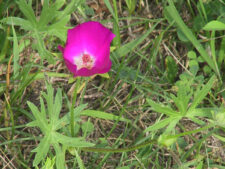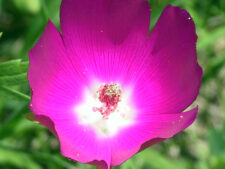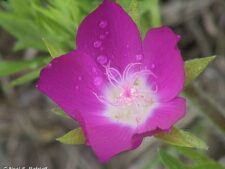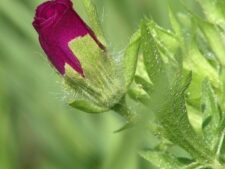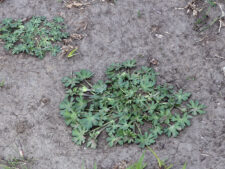
This native perennial usually has several stems arising from a single taproot the shape and size of a carrot. Stems are 1-3 feet long, often trailing over the ground or adjacent vegetation (F). Alternate leaves are deeply cut into 5-7 lobes which may be toothed or further subdivided (A). Long stalked solitary flowers may be found among the leaves or projecting above them (B). They are cup-shaped consisting of 5 overlapping rose to purple petals with white bases. In the center is a column of stamens with deep rose-pink filaments and pale yellow or white anthers at the tip (C). The pinkish branching style, initially completely hidden by the stamens, emerges as the flower matures (D).
This prairie plant prefers dry, sandy soil, flowering from May through August. At Neale Woods, it is uncommon along the trail just below the bench in upper Jonas Prairie and in the planting just above the upper parking lot. At Fontenelle Forest, it is doing well in the small islands of the visitors center parking lot where it was planted as an ornamental, testament to its ability to thrive in hot, dry, inhospitable environments.
The carrot-sized root is edible, tasting much like a sweet potato, as are the mucilaginous leaves which have been used to thicken soup. The Teton Dakota used it as a treatment for head colds, inhaling the smoke from the burning, dried roots.
Other common names include Wine Cup, Buffalo Poppy and Cowboy Rose.
The content of NatureSearch is provided by dedicated volunteer Naturalists of Fontenelle Forest who strive to provide the most accurate information available. Contributors of the images retain their copyrights. The point of contact for this page is: Neal Ratzlaff.

 Identification
Identification